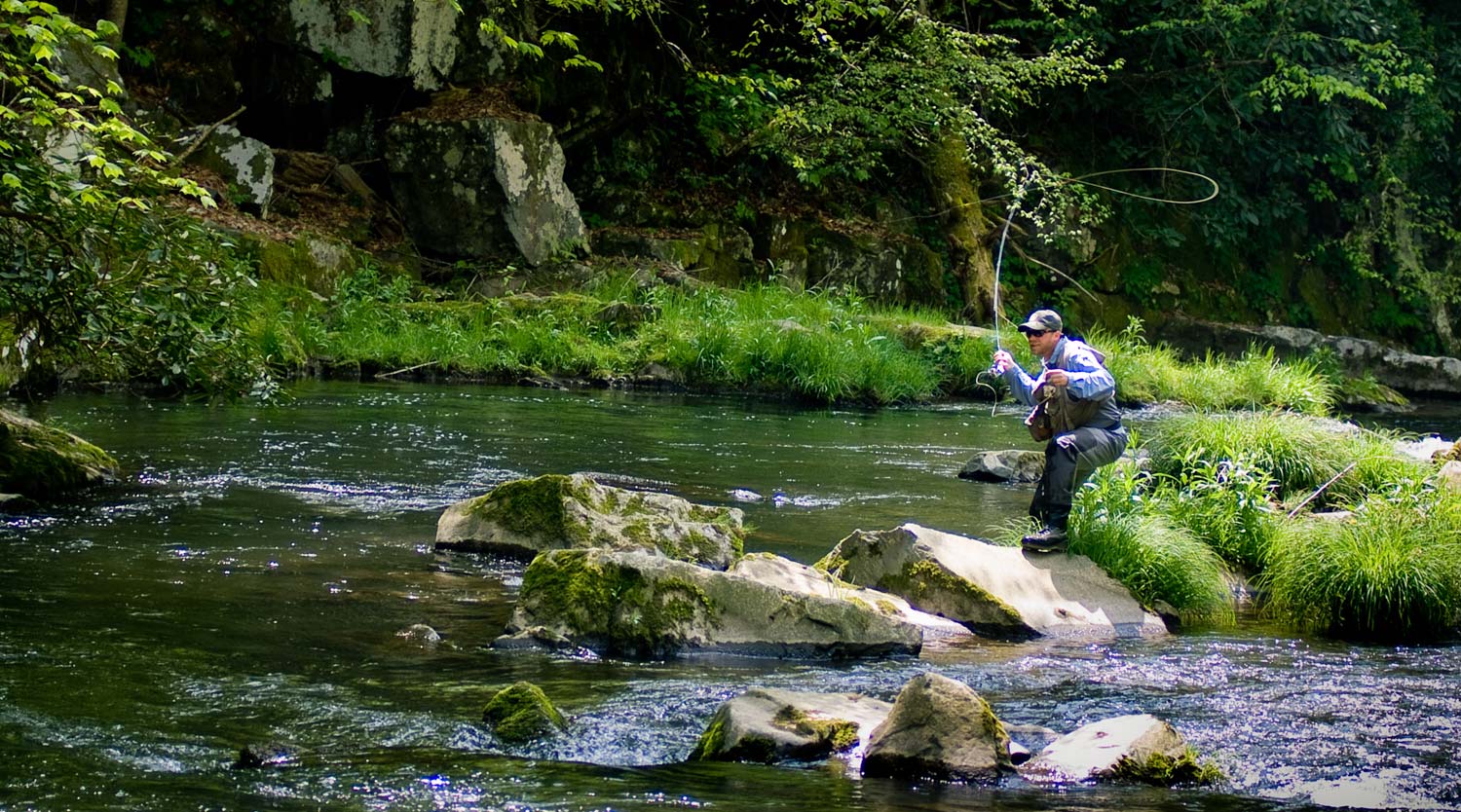
Photo By Louis Cahill
By: Alice Tesar
Dry fly season is upon us and the shop is filled with folks wondering why the fish aren’t interested in their dry flies.
Yes, it is important to get the correct flies but equally as important is your leader and tippet. The biggest mistake these people are making, one I made for years, is just switching out their nymph for a dry fly without addressing their tippet length.
Without giving you too much to work with, recognize that the evolution of tapered leaders has revolved around nymphing and streamer fishing. Engineered with a more aggressive taper to cut wind and cast greater distances. Most factory made tapered leaders ignore the long tippet section required for a dry fly presentation.
Adding one to three feet of tippet (*gasp* yes, your leader and tippet will now be close to 13’ long) will allow you to mend easier (if you need to mend at all) and will give you a more natural drift without the added weight of a tapered leader. Instead of fretting about turning over your fly in a long cast think about a more precise, shorter cast.
With the thinnest and most invisible portion of your rig, the tippet, close to the fly it won’t matter if it doesn’t turn over when your fly lands on the water’s surface. A longer tippet section will also keep you from lining the fish (when the fish see your line before they see the fly). Just try it.
Alice Tesar Gink & Gasoline www.ginkandgasoline.com hookups@ginkandgasoline.com Sign Up For Our Weekly Newsletter!
Sign Up For Our Weekly Newsletter!

Right on. Giving away the secrets!
True Ive been using a long tapered leader for long time be drift ..presentation to the rising fish..it lays out nice the cast is effortless..wnd results vary depending on the species of fish you are angling for…success is measuredin the length of one leader..a good long drift.can create results..so hold on after each cast…Tite little es Edward Solomon Jr…..
Well written article and absolutely “dead on “correct.
Although not a dry fly”purist” I have been an avid dry fly fisherman and tyer for 56 years and I personally learned what Alice has so eloquently explained more than 40 years ago. I could not have explained this any better than the author above so I won’t. If you want to double your dry fly ‘takes” wherever you pursue trout or salmon apply what Alice states above your fly “presentation” is just as important as the size and shade of the dry fly you’re using.
This may be the most clear and concise explanation of tippet and leader ever written
How about tippets when fishing for bonefish?
Hi Jim
When I have been guided on bones the guides always used stiff fluro 4x and about 4 feet of it on a 9 or 8 &1/2
leader. Again, longer rather than shorter. That’s what I used and was shown to use….Hope this helps
If the surface is calm or you’re on stillwater degrease the tippet for at least a foot from the fly. if the fish can see the tippet on the surface it will almost always refuse.
Great article and Louis, you’ve really caught a dynamic photograph of a trout hunter in action.
Thanks Mel!
As a dry fly purist (as some call us) I am somewhat intrigued with the definition of long leader. I fish long slow pools of the Upper Delaware River system where wild trout have been accustomed to being cast to by tons of fishermen (and women). I’m generally using leaders from 18 to 20 feet in length (and that includes 6 plus feet of 6X tippet). I would not even consider a 13 foot leader unless heavy wind made it necessary (the heavy wind would also add commotion to the otherwise glassy pools). Just my .02 cents.